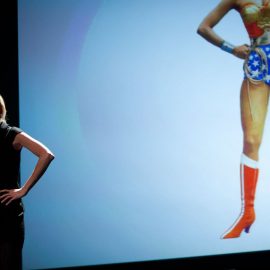

This article is an excerpt from the Shortform book guide to "The Blind Side" by Michael Lewis. Shortform has the world's best summaries and analyses of books you should be reading.
Like this article? Sign up for a free trial here .
What is the Tuohy foundation? How did Michael Oher’s experience help shape the Tuohys’ decisions to start their foundation?
Sean and Leigh Anne Tuohy learned that there were many other kids like Michael who wanted more opportunities. They formed the Tuohy foundation to help more Black athletes improve their grades so they could attend college.
Read more about how the Tuohy foundation was influenced by Michael Oher.
Michael Oher’s Legacy and The Tuohy Foundation
Michael’s story is scripted as though it was meant to be, and for Michael, it was. He has a hard time admitting that anything that happened to him contributed to his success. He knew from early on that he was going to be a big athletic star, and he saw his rise as merely the fulfillment of his destiny. But the truth isn’t quite so fantastic or simple, and Sean and Leigh Anne would later get inspired to form the Tuohy foundation.
Michael may have been born with an athletic gift that made him ripe to be a star, but his path to the NFL was by no means a sure thing. He had to overcome his learning issues and poor school performance, run-ins with the law, an NCAA inquiry, and his lack of training to be a starting left tackle for Ole Miss and a future first-round prospect for the NFL draft. And if he’d simply stayed a black kid from the inner city, he’d likely not have made it. There were numerous people, from Big Tony to the Briarcrest administrators and teachers, who made his current life possible. And then there were the Tuohys, without whom Michael would not have been treated with the privilege he enjoyed.
All of these aspects of Michael’s life turned him from a poor black kid that no one knew about into a household name within the football sphere and beyond. And although Michael’s talents and body type are unique, his potential is not. There are hundreds of talented black athletes in West Memphis and other inner city communities who have what it takes to be star athletes someday. But more than likely, no one will ever know who these kids are. Their lives are not organized in a way that grants them access to the brass ring. But after Michael, many tried.
Briarcrest became inundated with applications from poor black students with bad academic histories but athletic talent. These boys wanted a chance to prove themselves and receive the help they needed to be successful in life. And although many at Briarcrest and in East Memphis saw that there was a benefit in helping these kids make something of themselves, the new president wasn’t comfortable with Briarcrest becoming a training ground for black youth.
Sean and Leigh Anne also recognized the lasting legacy of what they’d done for Michael, which was part of what inspired them to later form the Tuohy foundation. They saw that there were many young black kids who could have bright athletic futures under the right circumstances. It wasn’t talent that held them back but a skewed system of opportunities. If Briarcrest had opted to allow more black students in, they would have been willing to help give them the resources needed to succeed. They also knew that it’s 100% fact that if Michael had never crossed their path, his talents would have remained unknown in Hurt Village.
This point was driven home for Leigh Anne one day in 2006 when she read a story about a young black boy from West Memphis named Arthur Sallis. Sallis was a football star on the rise at one of the Memphis public high schools. He was being recruited by every coach in the SEC and offered scholarships from Kentucky and Ole Miss. But he didn’t qualify for college sports because he didn’t meet the NCAA’s minimum GPA requirement. His scholarships went unused, and Sallis returned to West Memphis.
Sallis didn’t simply go back to West Memphis and do nothing. He started a carpet-cleaning business with his high school coach’s help and raised his baby daughter on his own. Then, a few years later, Sallis was at home with his four-year-old daughter when three men broke in. They shot him in the head, and at 22, Arthur Sallis died.
Leigh Anne realized that Michael could very easily have been Sallis, and she wasn’t alone. A study conducted at Sallis’s high school showed that 5 of 6 students with collegiate athletic potential never make it because of their educational performance. One of the only career paths afforded to poor black kids was obstructed. But Leigh Anne was going to do something about it. She decided she wanted to start the Tuohy foundation that would help promising black athletes raise their grades so they could follow their dreams.
Shortform note: The Tuohy foundation continues to operate and has continued to work on numerous projects in the Memphis community.

———End of Preview———
Like what you just read? Read the rest of the world's best book summary and analysis of Michael Lewis's "The Blind Side" at Shortform .
Here's what you'll find in our full The Blind Side summary :
- How Michael Oher went from the projects in Memphis to the NFL
- Why the combination of size and speed became essential for football stars
- How Oher was taken in by the wealthy Tuohy family






